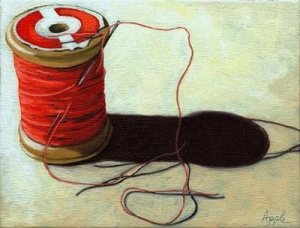 I recently found a copy of Noah Webster’s Elementary Spelling book, a version apparently published in the 1840’s, that includes an intriguing discussion of spelling. A primary motivation that informed Webster’s work on the spelling book was generating national unity through consistent pronunciation and spelling. Webster’s work included differentiating American English from British English, as his book appears to be the source for the absence of a “u” in words such as color and favor and spelling “center” with an “er” instead of an “re”. Continue reading “Spelling Identity”
I recently found a copy of Noah Webster’s Elementary Spelling book, a version apparently published in the 1840’s, that includes an intriguing discussion of spelling. A primary motivation that informed Webster’s work on the spelling book was generating national unity through consistent pronunciation and spelling. Webster’s work included differentiating American English from British English, as his book appears to be the source for the absence of a “u” in words such as color and favor and spelling “center” with an “er” instead of an “re”. Continue reading “Spelling Identity”
Imagining Identity
 What if we, as scholars, told the following narrative? In the first century there was a man named Jesus who invented a magical spool of invisible thread. He carried the spool with him everywhere he traveled as an itinerant preacher. When those who heard his message accepted it, he would magically partition the invisible thread, handing an end to each new follower. Jesus’ disciples each carried an end of this invisible thread, and everywhere they went they too distributed it. Like the loaves and the fishes Jesus is said to have multiplied to feed the masses, so was the thread multiplied and divided—like a complicated spider web—across the face of the ancient Mediterranean world. In fact, the thread stretched not only across space but across time as well, although it has been divided innumerable times over the last two millennia. Contemporary followers of Jesus in the Catholic, Eastern Orthodox, and Protestant churches hold the thread today at its various temporal and spatial termini. Continue reading “Imagining Identity”
What if we, as scholars, told the following narrative? In the first century there was a man named Jesus who invented a magical spool of invisible thread. He carried the spool with him everywhere he traveled as an itinerant preacher. When those who heard his message accepted it, he would magically partition the invisible thread, handing an end to each new follower. Jesus’ disciples each carried an end of this invisible thread, and everywhere they went they too distributed it. Like the loaves and the fishes Jesus is said to have multiplied to feed the masses, so was the thread multiplied and divided—like a complicated spider web—across the face of the ancient Mediterranean world. In fact, the thread stretched not only across space but across time as well, although it has been divided innumerable times over the last two millennia. Contemporary followers of Jesus in the Catholic, Eastern Orthodox, and Protestant churches hold the thread today at its various temporal and spatial termini. Continue reading “Imagining Identity”
